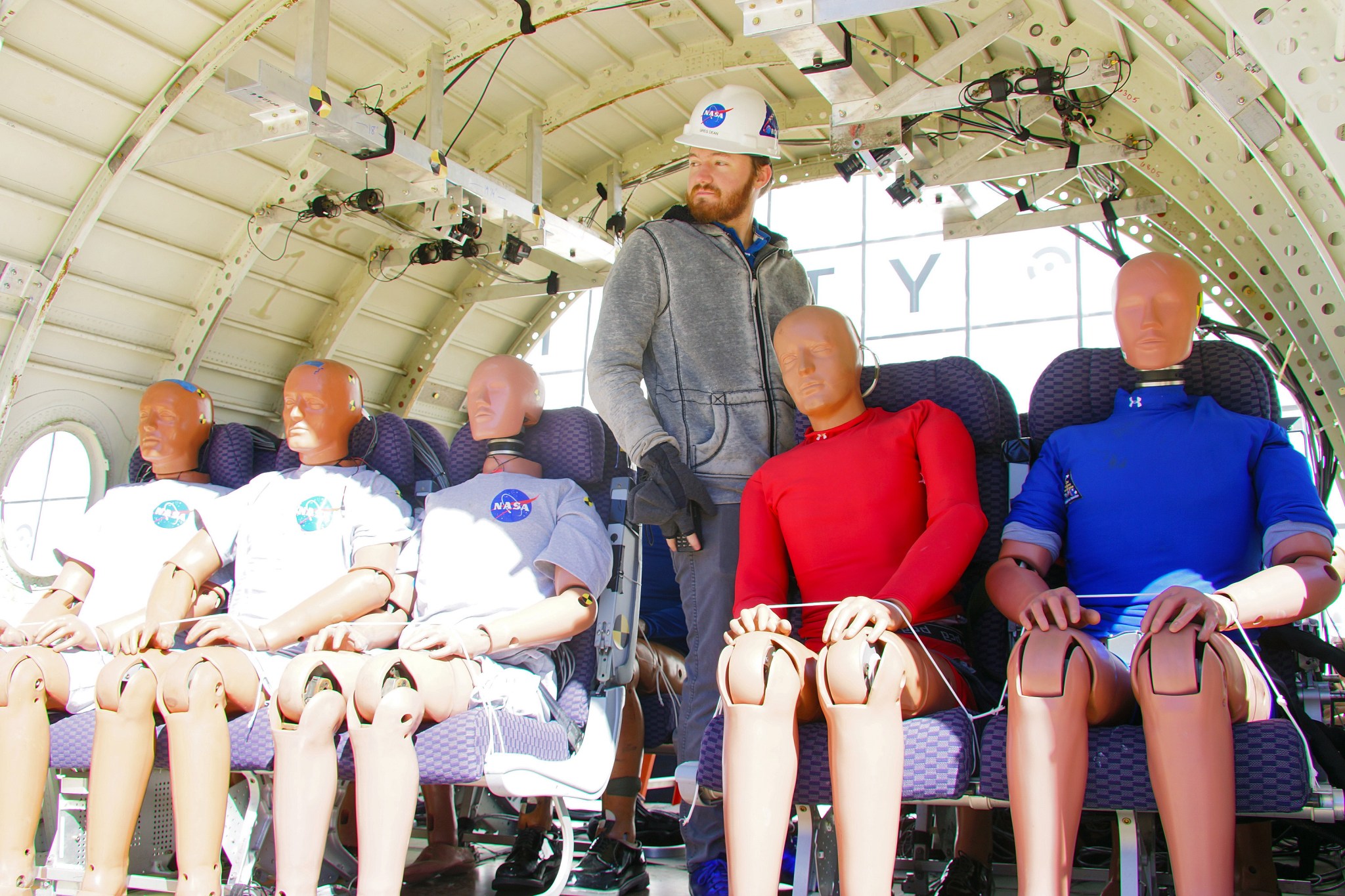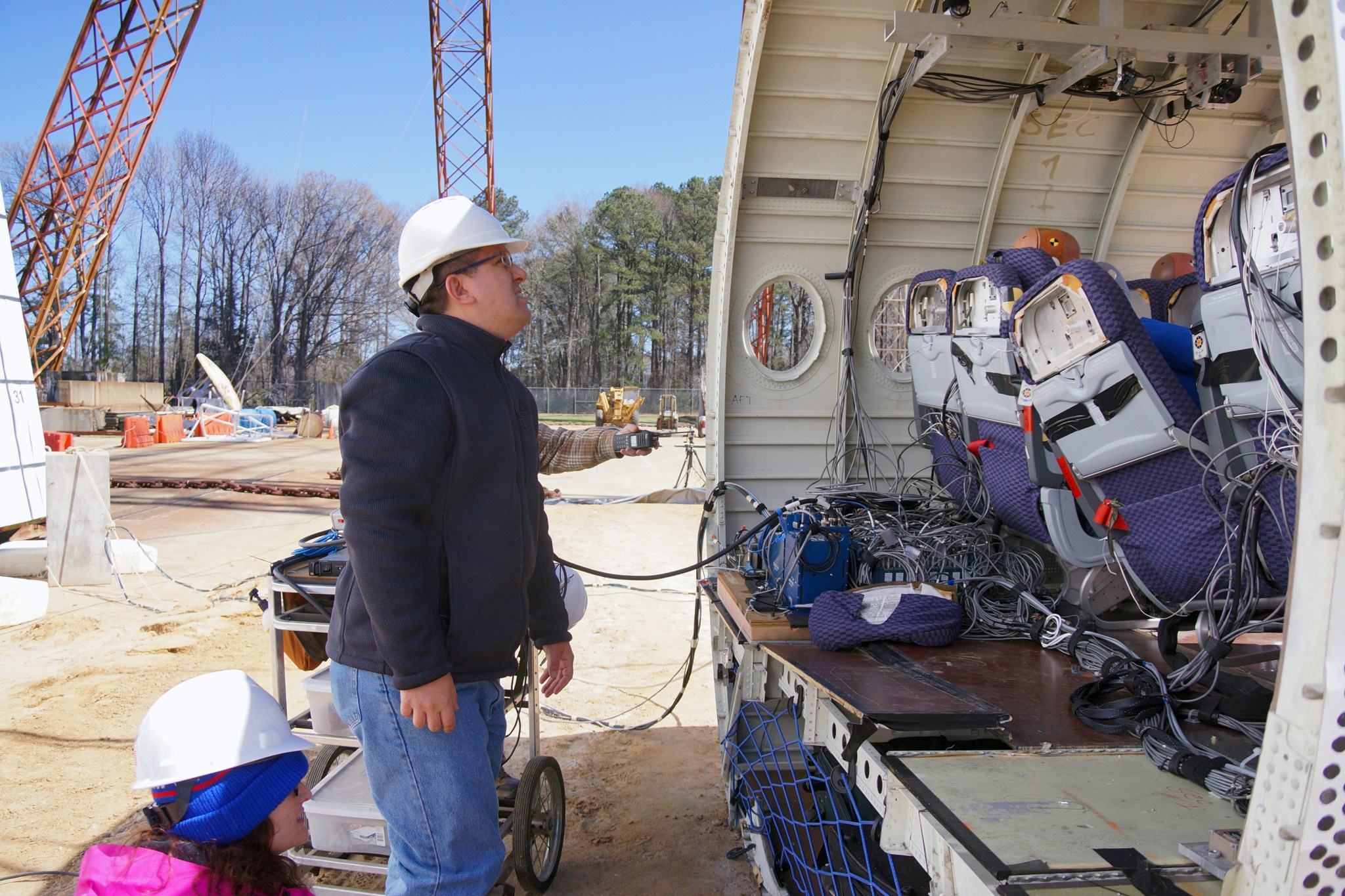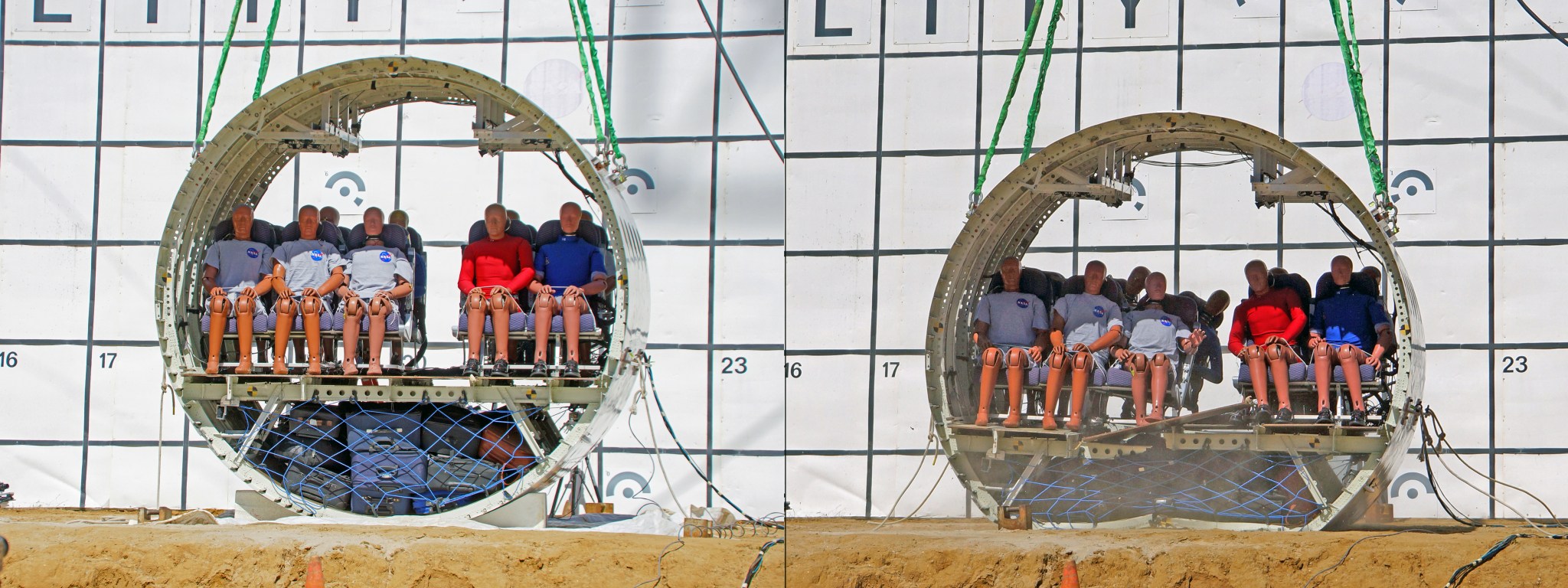Ten crash test dummies buckled into seats in a cut-out section of a regional jet fuselage will soon help develop new crashworthiness guidelines for future airplane designs.
The dummies were part of a vertical drop test from a height of 14 feet (4.27 meters), impacting at speeds of 30 feet per second (9.14 meters per second), at NASA’s Langley Research Center in Hampton, Virginia. The test was a joint NASA/Federal Aviation Administration (FAA) research project.
“We’re working with the FAA to update the requirements for the testing of next generation airframe concepts – especially those that may include composite materials,” said Martin Annett, NASA crash test engineer.
It is part of the FAA’s efforts to address how to better assess the airworthiness of new transport planes that contain nonmetallic components.
“We’re looking at gathering data on regional jet-sized aircraft and how they perform, particularly metallic planes,” said Joseph Pellettiere, FAA chief scientist and technical advisor for crash dynamics. “That way we can develop a set of baseline data that we can use to compare when we look at new and novel designs that might use different materials.”
“NASA has the test facility and the expertise for conducting these tests,” added Pellietiere. “So it’s great partnership where we can bring our test article, our dummies, our seats and use the expertise of NASA.”
To get data on the airplane’s structure and what might happen to its human passengers in the event of an accident, engineers strapped instrumented dummies into conventional airplane seats. Four of the dummies came from the FAA’s Civil Aerospace Medical Institute in Oklahoma City. The other six are NASA Langley’s.
Just like real passengers their sizes represent a cross section of the population. Eight are 50th percentile male dummies – modeled on an average man in height, proportion and mass. One is a 95th percentile male considered heavier and taller than 95 percent of human men. The tenth is a 5th percentile female dummy – only five feet tall and 110 pounds (49.9 kilograms).
Not only were the dummies instrumented with transducers so engineers could test the loads and strains on their “bodies” from the force of the drop, the cut-out cross section of the fuselage also was equipped with instrumentation to help engineers determine how the structure performed under impact.
“One thing that was unusual in this test was that we included baggage in the cargo hold,” said Annett. “It’s actual unclaimed luggage from an unclaimed baggage center in Alabama. We want to see how the luggage interacts with the subfloor that separates it from the dummies.”
“We even put a data recorder in one of the bags to measure what happens to it during the crash,” added Justin Littell, NASA test engineer.
During the test at NASA Langley’s Landing and Impact Research Facility, engineers dropped the “passenger cabin” onto two feet (0.61 meters) of dirt. High-speed video cameras recorded all the action, onboard and around the perimeter of the test article, to capture the crash and how the fuselage tube and its occupants responded.
The outside of the tube sported an unusual black and white speckled paint job –for a technique called full field photogrammetry. Cameras filming at 500 frames per second track each black dot so engineers can plot exactly how the fuselage deformed or reacted under crash loads.
Early results after the crash showed much of what engineers expected – some of the dummies got a good jolt. “But from the loads recorded it looked like there would have been a low likelihood of severe injury,” said NASA’s Annett. “It appeared that the bags ripped the floor in some locations in the center, so we’ll have to take a look at that as we slowly take this thing apart.
“The seats held up,” said the FAA’s Pellettiere. “There was a lot of floor damage, but the fitting for seats still held up which is a good result – meaning that even with that amount of structural damage we would expect the seats to remain in place and give the occupants a chance to evacuate.”
NASA researchers will take the data from the cameras and instruments, analyze it and then share the results with the FAA. The information will be used, in part, to help guide discussions for better airframe-level crashworthiness and ditching standards. Those discussions are underway in the Aviation Rulemaking Advisory Committee, which includes NASA and FAA as members.
The test was a collaborative effort of the FAA William J. Hughes Technical Center in Atlantic City, New Jersey, and NASA’s Revolutionary Vertical Lift Technology Project.
Kathy Barnstorff
NASA Langley Research Center


































